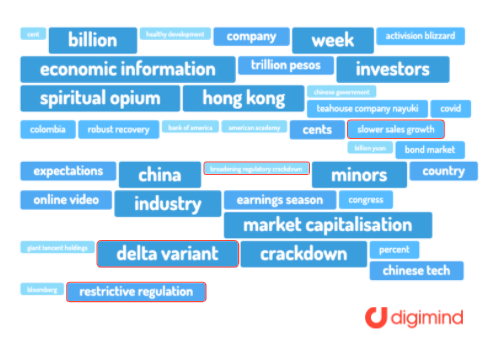Relieving Stock Market Pain Points Modern Investors Face
The Covid-19 pandemic has changed the way we approach money, or rather, it has made people realize what more they could do with their money.
For most, the pandemic has opened people up to considering more ways of spending their money. From my perspective, the change in spending patterns are bound to naturally occur in the case where people have fewer ways to spend their money: fewer outdoor activities to go to; leisure travel indefinitely ruled out, and even shopping for goods like clothes seem like a needless expense with the stay-home lifestyle becoming a default.
On the other hand, an excess of disposable income would not necessarily lead people to save more. There may be two types of people who would navigate where this extra money is allocated:
- The first being consumers who have embraced online shopping to supplement their offline shopping habits. Brands have pivoted to eCommerce, with online retail sales increasing as people have begun to prefer the convenience and time-saving aspects it offers.
- The second type of consumers, who will be the main focus for the rest of this blog, are essentially those who have been largely observing changes in the economic market. Finding opportunities in the stock market may be an objective way to shifting a person’s financial circumstances.
Optimists knew that as soon as news of any Covid-19 vaccine rollout was in sight, it would spark a chain reaction to the rest of the economy as it meant there would be a bounce-back at some point in the near future. Leveraging on market gains may be how this second type of consumer is banking on to protect their financial health by re-prioritizing their disposable spending. Being proactive in investment decisions could be the new way of staying resilient through uncertainty.
In a similar vein, brands that have good customer relations circumvent investor pain points by looking at external factors in their business environment, which includes managing their brand reputation on social media.
With the multitude of corporate records available online, financial forums to discuss stock picks, and little to zero commission brokerage apps to freely sign up on, it’s no wonder that so many individual investors have picked up investing on the sidelines. Following the ‘year of the retail investor’ in 2020, a reported six million Americans downloaded a trading app in January 2021 demonstrated the continued power retail investors hold in trading movements.
When it comes to identifying the right stocks, index funds and exchange-traded funds (ETFs), or even bonds to invest in, one thing is certain for brands: your brand reputation is determined by the volume of public interest created. Public scrutiny is at its highest when it involves volatility to your investor's money.
Would you think, as a digital marketer or market research analyst to your brand, that your company’s needs are better served when you have the right information collected about public perception to highlight it back to shareholders? Understanding these three pain points might be what’s needed to navigate gaps in future strategy-making and address immediate concerns if crises do surface.
Adding a social intelligence tool like Digimind Social to your marketing and consumer research stack can provide an in-depth look at what your customers are talking about pertaining to your brand, market, and even competitors.
1. Fear Behind Current Investor Sentiment
Share prices can give investors heart palpitations on a daily basis, especially with the constant flux happening during a single trading day. However, when investors observe the value plummeting day to day without any signs of bouncing back, there is bound to be fear in many others who have not thought twice about selling their stock.
Brands often don’t do enough to quell the worry set in investors about their predicament. Worst of all, there are brands that ignore investor feedback in their communications for the sake of committing to long-term strategies. These days, announcing an official statement as an apology or redacting a statement to temporarily appeal to an audience doesn’t warrant enough action to bring confidence back to your brand.
Although it may be difficult to discern investor sentiment as it is not entirely observable based on facts alone but by the general trend in which the investment is heading, investors often look for telltale signs around the brand to predict when to buy or sell stocks.
Word cloud on top keywords surfaced surrounding investor fears using Digimind Historical Search.
Social media could be the cornerstone for your research in these cases, as often do people arrive on social media with the intention of finding quick results or react to groundbreaking news. Digimind’s Historical Search feature can instantly pull and display vital keywords on what people are talking about, doubling as a research aggregator to effectively siphon pain points unknown to your stakeholders.
Staying investor-centric can be a compelling way to build trust among your shareholders, as you look to circulate—or in essence, communicate—standing issues internally back to various departments across your organization. Ideally, you’d want to enforce a feedback loop in real time so as to make sure the most pressing issues come to the fore in development. Updating regularly about pending company updates in the pipeline not only eases up the worries investors face but also sets future growth on a sustainable level.
2. Questioning the Legitimacy of Your Brand’s Promises
When investors look at a brand’s future offerings, they often question whether a brand may be able to materialize and meet its expectations. Often, if the brand has a large enough following, there may be built-up hype about an incoming product or service, with the ebb and flow resulting in significant interest surrounding the brand’s stock value.
In these situations, investors may want to feel more certain about a brand by researching the history of the brand’s earlier innovations and successes. Keeping in mind that social media is a valuable source of information that contains insights into a brand’s reputation by uncovering key metrics such as Share of Voice (SoV) and overall sentiment.
Share of Voice of Abercrombie & Fitch on social against its stock value from Jul 2020 - Jul 2021 using Digimind Historical Search.
For example, we collected social data on mentions around Abercrombie & Fitch (ANF) over the past 12 months and compared it against its share price valuation in the same period. The clothing retail label saw a tremendous 393% increase in its share price from over a year ago, which contrasts earlier scares in December 2020 when the company announced that it would be shutting several flagship stores around the world.
While it may have seemed alarming to investors, it was ultimately a move that helped the company reposition its booming eCommerce operations while cutting out expensive overheads of physical stores that bore minimal returns.
With Digimind Historical Search, you would be able to look up your own brand’s past performances on a longitudinal timeframe of the past 24 months. By looking at historical data, you can effectively build a multitude of solutions: from informing your team and stakeholders about specific issues that had surfaced before; allocating resources to develop certain offerings; or building PR contingency strategies based on past responses.
Following this approach will allow investors to view your brand as being more authentic and transparent in its approach to growth, as well as incorporating more realistic expectations on their own market gains.
3. An Overwhelming Number of Stock Choices
While there may be a significant volume of retail investors present, there remains the issue where countless people would likely face not knowing which companies to invest in. These days, your brand has more online avenues to provide greater levels of visibility, along with the incentive to keep your brand top of mind.
Comparing luxury brands with key social metrics such as mentions volume, reach, and sentiment using Digimind Social.
Understanding what your competitors are doing is paramount to staying abreast with changes, and more similar than you think with how investors do their research on different brands in your industry. By benchmarking your brand on top of other competitors, you would be able to measure how visible your brand is on the web and social sources. The competitive advantage is sticking with what your investors expect and delivering through their pain points gathered via a smart social listening tool.
One strategy that you could lean on to provide ample visibility, without the influx of large advertising budgets, is to use social media. Social media can prove an effective platform to engage, secure, and retain investor relationships on a broader audience level. After all, retail investors are more than likely to build more confidence in your brand when they see regular communication about developments within the company and with the broader economy as a whole.
You may want to take it one step further by offering investor shareholders a chance to receive monthly emails on top of your regular network channels. Emails would help to keep an open line of communication with your investors, disseminating information more incisively than you could on social media, without the addition of prying competitors.
Implementing Investor-Centric Branding
For your brand to have a Midas touch, there’s a more profound effort to building the right messaging to attract the right investors to your brand. With more interest in the stock market than ever, social network data could impart better strategies by looking at the needs and opportunities lurking in plain sight.
As investors look to stay informed about market changes, so should your brand when it comes to monitoring trends, processing pain points along your investor’s journey, and most importantly accentuating your brand's positioning as an innovative leader.
Discover how social listening can help elevate investor strategies in 2021, drilling down into key consumer behavior and sentiment behind the cryptocurrency landscape.
Handling Brand Crises With Social Listening
Written by Jared Silitonga
Jared is a member of the APAC marketing team at Digimind. Besides hashing insights into content, he loves a good ol' sit-down of board gaming and film rhetoric. Catch him diving in other shenanigans on Instagram @jarrds

